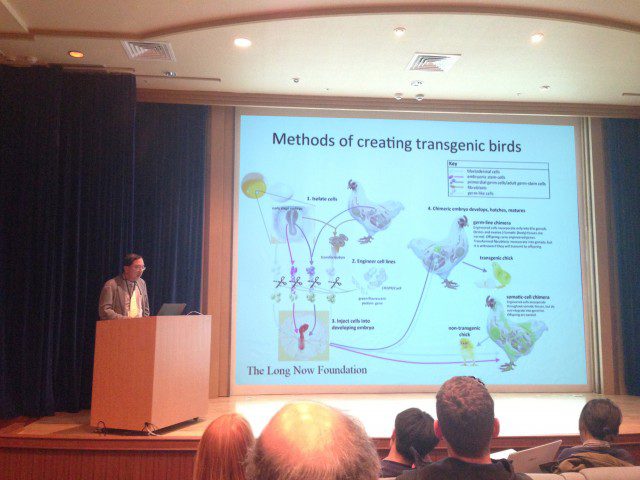By Ben J. Novak
I returned from Taipei, Taiwan today after attending the Avian Model Systems 9 meeting and taking a week-long tour of the spectacular sights of Taroko Gorge, Hualien, and Alishan to reflect on the mass of information presented. Being in the wilderness is certainly the best way to digest new ideas for applying new science innovations to conservation.

The Avian Model Systems meeting is a unique conference of scientists striving to make birds the best model organisms possible for many avenues of research. Often, non-avian models are unsuitable to study a particular phenomenon, such as the study of verbal learning, for example. The neuro-process by which bird songs are formed parallels human speech development. By comparison, humans’ closest relatives, the primates, wholly lack verbal-learning. In other words, when it comes to studying speech, you won’t get far with a chimpanzee–you’ll need a zebra finch.
The meeting covered everything involving birds: advances in food production, the study of evolution through whole genomes, how genes form tissues and organs, human medical developments, and transgenics.
Birds have been the model organisms for studying embryonic development for many years, but the difficulty in applying transgenesis to birds has hampered the use of the avian model in modern science. Now this stagnation appears to be resolving as the use of CRISPR/Cas9 genome-editing technology is adopted for avian transgenics.
Two years ago at the 2014 Avian Model Systems 8 conference, the only mention of CRISPR/Cas9 was in reference to its future use in passenger pigeon de-extinction — despite CRISPR/Cas9’s rapidly spreading use in other model organisms at the time. At this year’s meeting, every avian transgenic lab in attendance reported using CRISPR/Cas9.
The CRISPR Zoo will soon be populated with birds, and not just chickens. The first CRISPR/Cas9 genome edited knockout chickens were announced in press just after the meeting, and more is to come. Many methods are being used to pioneer the use of CRISPR/Cas9 in genome editing. These include in vitro editing of primordial germ cells that are subsequently transmitted through germ-line chimeras to produce genome edited offspring, and direct injections to developing embryos, creating germ-line chimeras in ovo (in the egg), which can then be bred to produce genome edited offspring.
The most radical news at the conference was the first reported use of CRISPR/Cas9 to generate precise genome edits (changing only a single base pair) in two genes, not only in cell lines in vitro, but also in specific tissues of embryos in ovo. The results were highly successful with no detection of off-target mutagenesis. This is extremely important for the future of avian genetic rescue; precise genome editing is the exact process needed to successfully achieve de-extinction and genetic diversity enrichment.
Since the 2013 announcement of our flagship passenger pigeon project, de-extinction has received a great deal of media attention. But more importantly, de-extinction is making its serious mark in the scientific community, with expanding projects. Mammoth de-extinction was a major topic of conversation among the scientists at the meeting. The intellectual considerations of de-extinction and biotechnology for conservation is gaining momentum in the field of avian model science — de-extinction was prominently mentioned as one of the field’s frontiers by keynote speakers.
De-extinction and genetic rescue are inspiring work in avian model science, creating a positive circle of feedback as genetic rescue benefits from scientific advances and serves to push the field farther. The many supporters of Revive & Restore can take credit for driving this momentum and driving the continued advancement of avian sciences for conservation purposes. Our rallying goal now is to present our own breakthrough milestones in avian science at the 2016 Avian Model Systems 10 in Paris, France.



